
Deerhurst is a village and civil parish in Gloucestershire, England, about 2 miles (3 km) southwest of Tewkesbury. The village is on the east bank of the River Severn. The parish includes the village of Apperley and the hamlet of Deerhurst Walton. The 2011 Census recorded the parish's population as 906, the majority of whom live in Apperley.
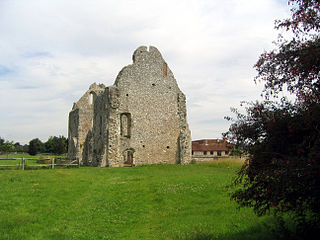
Boxgrove Priory is a ruined priory in the village of Boxgrove in Sussex, England. It was founded in the 12th century.
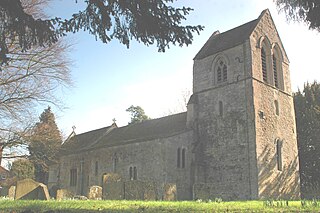
Ickford is a village and civil parish in the unitary authority area of Buckinghamshire, England. It is on the boundary with Oxfordshire, about 4 miles (6.4 km) west of the market town of Thame.

Chirton is a village and civil parish in Wiltshire, England, on the southern edge of the Vale of Pewsey about 5 miles (8 km) south-east of Devizes. The parish includes the hamlet of Conock, about half a mile west of Chirton village.

Woodspring Priory is a former Augustinian priory. It is near the scenic limestone promontory of Sand Point and Middle Hope, owned by the National Trust, beside the Severn Estuary about 3 miles (5 km) north-east of Weston-super-Mare, within the English unitary authority of North Somerset. Many of the buildings are Grade I listed, and the whole site is scheduled as an ancient monument.
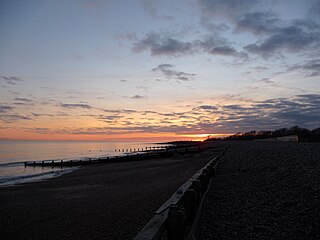
Climping is a village and civil parish containing agricultural and natural sandy land in the Arun District of West Sussex, England. The parish also contains the coastal hamlet of Atherington. It is three miles (5 km) west of Littlehampton, just north of the A259 road.

Wissett is a village and civil parish in the English county of Suffolk. It is 2 miles (3.2 km) north-east of the market town of Halesworth in the East Suffolk district. Historically, it was in the Blything Hundred.

Michelham Priory is the site of a former Augustinian Priory in Upper Dicker, East Sussex, England, United Kingdom. The surviving buildings are owned and administered by the Sussex Archaeological Society and are Grade I and Grade II listed.

Steventon is a village and civil parish in Oxfordshire, England, about 4 miles (6.4 km) south of Abingdon and a similar distance west of Didcot. It was part of Berkshire until the 1974 boundary changes transferred it to Oxfordshire. The 2011 Census recorded the parish population as 1,485.

Cannington is a village and civil parish 3 miles (5 km) northwest of Bridgwater in the Sedgemoor district of Somerset, England. It lies on the west bank of the River Parret, and contains the hamlet of Edstock.

Lancaster Priory, formally the Priory Church of St Mary, is the Church of England parish church of the city of Lancaster, Lancashire, England. It is located near Lancaster Castle and since 1953 has been designated a Grade I listed building. It is in the deanery of Lancaster, the archdeaconry of Lancaster and the Diocese of Blackburn. Its benefice is combined with that of St John and St Anne.

Rumburgh is a village and civil parish in the English county of Suffolk. It is 3.5 miles (5.6 km) north-east of the market town of Halesworth in the East Suffolk District. The population of the parish at the 2011 United Kingdom census was 327.
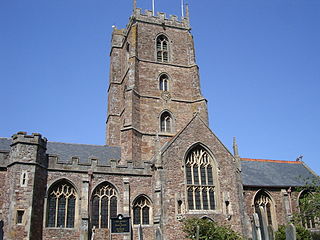
Dunster Priory was established as a Benedictine monastery around 1100 in Dunster, Somerset, England.

Deeping St James Priory was a priory in Deeping St James, Lincolnshire, England. It was a dependency of Thorney Abbey.
Avebury Priory was an alien house of Benedictine monks in Wiltshire, England, between the early 12th century and the Dissolution.

The Church of St Thomas the Martyr is in School Lane, Up Holland, Lancashire, England. It is an active Anglican parish church in the deanery of Ormskirk, the archdeaconry of Warrington, and the diocese of Liverpool. The church is recorded in the National Heritage List for England as a designated Grade I listed building.
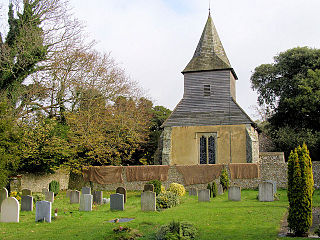
St Mary and St Peter's Church is in the village of Wilmington, East Sussex, England. It is an active Anglican parish church on the deanery of Lewes and Seaford, the archdeaconry of Lewes and Hastings, and the diocese of Chichester. Founded in the late 11th century to serve villagers in a rural area at the foot of the South Downs, it also functioned as a priory church for the monks from the adjacent Wilmington Priory, to which it was physically connected. The building has "benefited from sympathetic restoration" over the centuries—including a series of works by prominent architects Paley and Austin in the Victorian era, and internal renovation after a fire in the early 21st century. The church is recorded in the National Heritage List for England as a designated Grade I listed building.

St Mary the Virgin's Church is a former priory church located in the village of Bromfield, Shropshire, England. It is an active Anglican parish church in the deanery of Ludlow, the archdeaconry of Ludlow, and the diocese of Hereford. Its benefice is united with those of 5 other parishes to form the Bromfield Benefice. The church is recorded in the National Heritage List for England as a designated Grade I listed building.
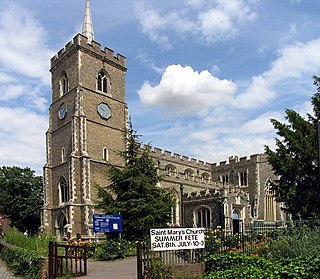
St Mary's Church is a grade I listed parish church in Ware, Hertfordshire, England.


















